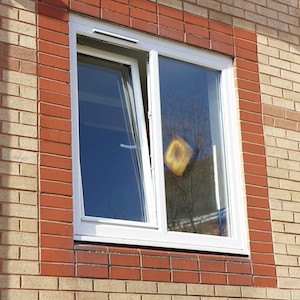A Window in the Door: More than Just a Pane of Glass
In the beginning look, a window in a door might look like a basic architectural function. It's simply a piece of glass that enables light to filter through or supplies a peek of what's on the opposite, right? However when you stop briefly to think of it, this apparently ordinary aspect carries substantial practical, visual, and even symbolic weight. Whether it beautifies the doors of your home, workplace, or favorite café, a window in a door is even more than simply a pane of glass-- it's a bridge in between spaces.
1. Performance: The Practical Role of Door Windows
The addition of a window to a door uses practical benefits that can boost both property and industrial areas:
Natural Light: One of the main functions of a window in a door is to allow sunlight to go through. In spaces with restricted windows or enclosed locations like corridors or interior offices, this feature can brighten the space, lower the dependence on synthetic lighting, and produce a more welcoming atmosphere.
Visibility and Safety: A window in a door supplies a clear view for those on either side. This is particularly essential in industrial and industrial settings, such as dining establishments, factories, or schools, where individuals frequently move through doors. Exposure decreases the danger of mishaps (e.g., someone walking into a door or clashing with somebody on the other side).
Ventilation and Energy Efficiency: When coupled with operable glass or contemporary technologies like double-glazing and low-E glass, door windows can contribute to better air circulation and energy efficiency in your home or office.
Security: While breaking glass may look like an open invitation to burglars, modern-day designs have resolved this problem. Enhanced glass, tempered glass, or styles with narrow panes can make the window resistant to break-in while still serving the purposes of presence and light.
2. Aesthetic Appeal: Enhancing the Visual Identity of a Space
From a design perspective, windows in doors can elevate aesthetic appeal in various ways:
Style and Character: The design of the window frequently matches the architectural vibe of the home. A home with a rustic or farmhouse appearance may feature a door with frosted or stained glass, while a sleek, modern home might showcase a minimalist door with simple, clean lines.
Modification: Door windows come in different shapes and sizes-- round, rectangular, oval, arched, or custom-designed to match your choices. This versatility gives homeowners and architects the capability to create doors with creative style and individual touches.

Curb Appeal: The entry door is often the focal point of a home's exterior, and a well-designed window within it can turn an otherwise ordinary door into a strong style declaration. Frosted or etched glass, for example, can communicate sophistication and sophistication.
3. Symbolism and Meaning: Beyond the Practical and Aesthetic
On a much deeper level, a window in a door carries symbolic significances that resonate across cultures and contexts:
Openness and Connection: A door with a window promotes a sense of connection between two discrete areas. Whether it's between a house and its front lawn or a workplace conference room and a hallway, the window can make these spaces feel less isolated and more integrated.
Transparency: In offices, doors with windows signify openness and responsibility. A supervisor's workplace with a glass-panel door, for circumstances, can indicate approachability, lowering the hierarchical barrier that a strong closed door might develop.
A Threshold of Opportunity: Metaphorically speaking, a door with a window can represent a view into new opportunities. Windows And Doors R Us offers a sneak peek into what lies ahead-- a fitting image for personal development and expedition.
4. Modern Trends: Innovations in Door Window Design
Advances in innovation and design are constantly reshaping how we think about door windows. Here are a couple of patterns to see:
Smart Glass: With the introduction of wise technology, windows that can change from transparent to opaque with the touch of a button are gaining appeal. These high-tech options use privacy as needed without compromising the advantages of natural light.
Energy Efficiency: Double- and triple-glazed door windows with advanced insulation are becoming standard in energy-conscious homes. These not just keep your energy costs in check but also lower environmental effect.
Ornamental Enhancements: Patterns, etching, and colored glass inserts are becoming more complex, offering house owners limitless possibilities to personalize their doors.
Safety Upgrades: Impact-resistant glass and shatter-proof movies are significantly being integrated into door windows, especially in locations susceptible to storms or high-security requirements.
5. Considerations for Choosing a Door with a Window
Before picking a door with a built-in window, there are a couple of factors house owners and designers must remember:
Privacy: While a window supplies presence and natural light, it can also compromise personal privacy. Frosted glass or tactically put window designs can alleviate this issue.
Maintenance: Glass in doors will gather fingerprints, dirt, and smudges, specifically in high-traffic areas. Opting for materials that are simple to tidy or have protective finishings can save time.
Combination with the Environment: Choose a door window style that matches the surroundings. A door in a quiet, residential community might focus on looks, while one in an industrial structure might stress durability and security.
Conclusion: A Small Feature with Significant Impact
As basic as it may appear, a window in a door is a function that mixes functionality with charm, security with style, and connection with uniqueness. It's a pointer that the smallest information in architecture can have the power to transform not just our areas but also the way we engage with them.
Whether you're peering through a glass panel to welcome a guest or letting natural light filter into your home, a window in a door is a lot more than a style component-- it's a way to open ourselves to the world, one pane of glass at a time.
